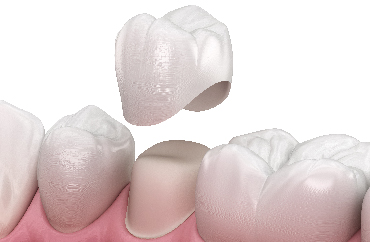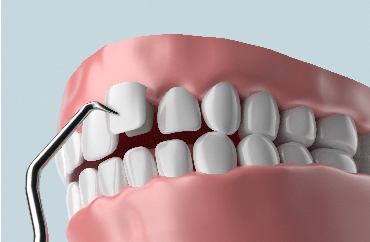Cosmetic Dentistry Trends

Today's dental patients do not only care about managing their pain and restoring function; they also care about their appearance. As a result, there has been a dramatic increase in the popularity of cosmetic dentistry, which focuses on improving the appearance of teeth.
"Dentistry for aesthetic purposes" is another term for cosmetic dentistry. It is a medical or dental operation that may lighten, straighten, reshape, repair, or replace your patient’s teeth in order to enhance or improve their appearance.1The following are the most current advancements in cosmetic dentistry.

TEETH WHITENING
Many individuals want white teeth and a bright smile since it might improve their quality of life. As a result, a variety of teeth whitening options have been developed by dental care companies. A list of the most popular teeth whitening techniques include abrasives, antiredeposition agents, colorants, proteases, peroxides, and surfactants. Although in-office bleaching with peroxides is effective, it may have negative side effects like tooth sensitivity or damage to the natural organic matrix of enamel and dentin.2

HOLLYWOOD SMILE
A great smile improves confidence, therefore maintaining your patient’s teeth healthy is vital. "Hollywood smiles" refers to a wide smile with no buccal corridors, which has gained traction to describe the aesthetic development of a dental look that is influenced by the attractiveness presented by movie stars. A symmetrical and attractive smile has long been connected with wealth and social acceptability. Having a Hollywood grin, according to some, may increase one's self-esteem and provide a better first impression.3 Patients are more likely to accept therapy if they have a clear understanding of what to expect and are involved in the planning process. Therefore, Digital Smile Designing (DSD) is a unique method that is being used to encourage and educate a patient who has doubts about the treatment's final outcome since it is an irreversible operation. Hence, dentists are currently utilizing this solution to make and change patients' smiles in a way that helps patients see how their new smile will look before they get treatment.4

DENTAL IMPLANTS
Dental implants are becoming an increasingly popular treatment option for restoring lost teeth since tooth loss is such a widespread condition.5 Dental implant utilization increased from 0.7% in 1999-2000 to 5.7% in 2015-2016. Individuals 65 to 74 years of age had the highest absolute rise in prevalence (12.9%), while the highest relative rise was approximately 1,000% spike in frequency among those 55-64 years old. Moreover, in 2026, the incidence of dental implants is expected to vary from 5.7% in the most conservative scenario to 23% in the most extreme.6
Additionally, these are some of the most recent implant design trends:5
Finite element analysis:
Computer-aided design and computer-aided manufacturing technology
Micro casting
Electron microscopy
Nanotechnology-based implants
Functionally graded materials

DENTAL CROWNS
Crowns are also commonly recommended for broken cusps and fractured teeth. A fracture rate of 89 per 1000 people per year is reported for coronal fractures, with posterior teeth being more prone to fracture.7 Superior aesthetic standards are no longer a luxury; there is a noticeable rise in cosmetic awareness and patients' expectations for a naturally looking dental restoration. Yttria-stabilized zirconia (Y-TZP) crowns are commonly utilized because of their great mechanical qualities, which outperform glass ceramics, paired with excellent biocompatibility and esthetics. Monolithic zirconia crowns were designed to overcome the issue of chipping of zirconia veneering porcelain, particularly in the posterior region.8 Zirconia crowns are a viable alternative to metal crowns in prosthodontics and have shown excellent clinical results. Moreover, restorative crowns composed of zirconia are well-tolerated and sufficiently resistant.9

VENEERS
Using veneers is the most conservative and aesthetically pleasing option, since they provide the patient with a beautiful smile.10 A veneer is a thin layer of restorative material that replaces the enamel. Here are the advances in the material aspect of veneers.
Thick, monochromatic teeth veneers
Stacked or feldspathic tooth veneers with reinforced leucite
Componeers
E – max veneers
Zirconia veneers
Lumineers
Da Vinci veneers
MAC veneer
Durathin
Vivaneers
1.Oral Health Foundation. Cosmetic Treatment. Available at https://www.dentalhealth.org/cosmetic-treatment. Accessed 9 June 2022.;
2. Epple M, Meyer F, Enax J. A Critical Review of Modern Concepts for Teeth Whitening. Dentistry Journal. 2019;7(3):79;
3. Alsurayyi M, Almutairi W, Binsaeed A, Aldhuwayhi S, Shaikh S, Mustafa M. A Cross-Sectional Online Survey on Knowledge, Awareness, and Perceptions of Hollywood Smile Among the Saudi Arabia Population. The Open Dentistry Journal. 2022;16(1):1-7;
4. Jafri Z, Ahmad N, Sawai M, Sultan N, Bhardwaj A. Digital Smile Design-An innovative tool in aesthetic dentistry. Journal of Oral Biology and Craniofacial Research. 2020;10(2):194-198;
5. Gaviria L, Salcido J, Guda T, Ong J. Current trends in dental implants. Journal of the Korean Association of Oral and Maxillofacial Surgeons. 2014;40(2):50;
6. Elani H, Starr J, Da Silva J, Gallucci G. Trends in Dental Implant Use in the U.S., 1999–2016, and Projections to 2026. Journal of Dental Research. 2018;97(13):1424-1430;
7. McCracken M, Louis D, Litaker M, Minyé H, Mungia R, Gordan V et al. Treatment recommendations for single-unit crowns. The Journal of the American Dental Association. 2016;147(11):882-890;
8. Mohamed H, Alansary H, Kheirallah L. Retention Strength of Polyetheretherketone Crowns Vs. Zirconia Crowns Restoring Molar Teeth: An in Vitro Study. Ain Shams Journal of Dental Science. 2021;2(1):1-13;
9. Soleimani F, Jalali H, Mostafavi A, Zeighami S, Memarian M. Retention and Clinical Performance of Zirconia Crowns: A Comprehensive Review. International Journal of Dentistry. 2020;2020(8846534):1-6;
10. Mitthra S, Elanthendral S, Anuradha B, Prakash V. Recent advances in the material aspects of veneers. Recent advances in the material aspects of veneers. European Journal of Molecular & Clinical Medicine. 2020;7(3):2079-2085.